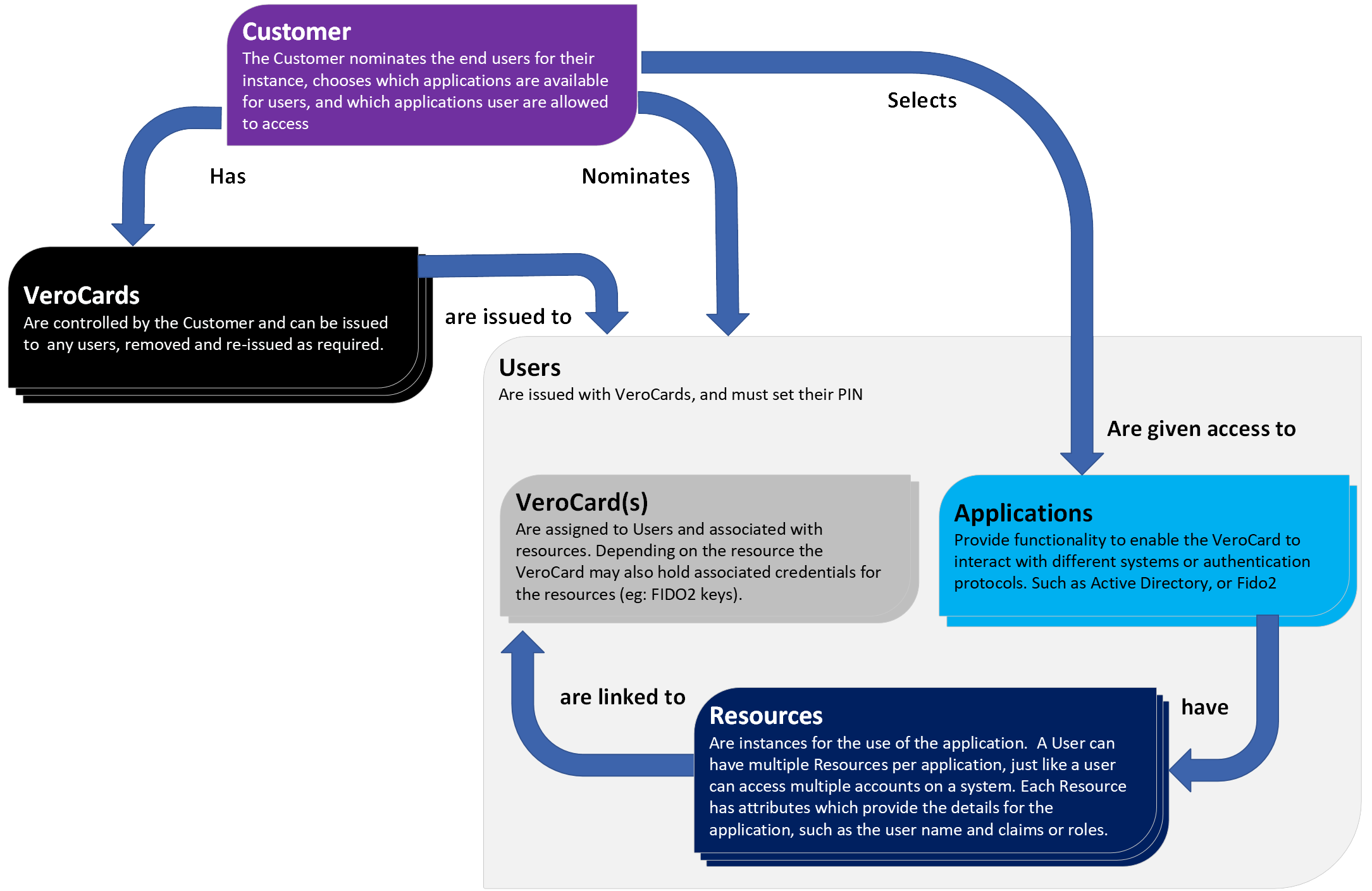VeroID Structure
VeroGuard Universal Identity
Universal Identity:
The VeroID provided by VeroGuard serves as a universal digital identity that can be used across various systems and platforms.
Complex Relationship Structure:
The relationship between a user, their assigned VeroCard(s), and the systems the VeroCard can authenticate is multifaceted. VeroGuard supports a flexible many-to-many-to-many relationships model, offering granular control at each step.
Device and Platform Flexibility:
VeroCards are not tied to a single device, system, or platform.
A user can use a single VeroCard to access multiple accounts and
Multiple VeroCard users can log into the same device.
ID Generation in Bureau of ID (BoID):
When a user is created in the VeroGuard system, a VeroID is generated in the Bureau of ID (BolD), which acts as a central hub for consolidating identities from other systems. This allows users to access any application integrated with VeroGuard using their VeroCard and PIN.
 VeroID Core Elements
VeroID Core Elements
The core elements to the structure of the VeroID and the relationship between them is explained below:
A Customer manages their VeroGuard instance and determines who can become an End User.
VeroCards are supplied to the Customer for allocation to End Users. VeroCards can exist without being assigned to any user, making them available for future assignment.
A VeroCard can only be assigned to one user at a time.
A User can have multiple VeroCards assigned to them simultaneously.
Applications can be made available to a Customer’s Instance.
The Customer Administrator can assign these applications to individual Users.
Examples of such applications include Active Directory or FIDO2.Each Application can have multiple Resources.
Resources contain data linked to a user's account and can be assigned to multiple VeroCards.

VeroGuard Customer Instance Concept
.svg)